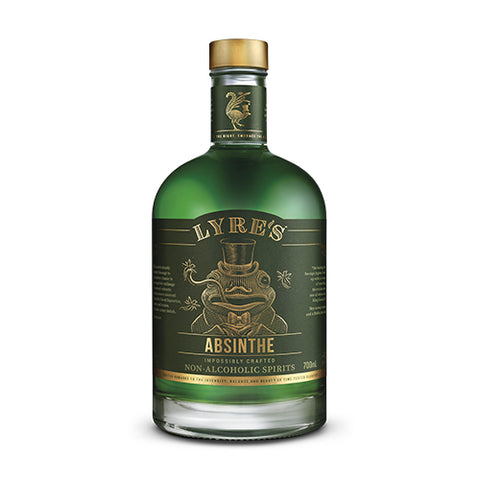

While you couldn’t call it absinthe, most of it could have been sold under a different name (only no producers realized that). Again, the definition of 'real absinthe' is non-existent, but in the U.S., absinthe was never even technically illegal. But now you can only get real absinthe in Europe, right? There’s probably also the fact that a bunch of wine drinkers having glasses of 10%-14% alcohol wine were now instead drinking glasses of a spirit that runs around 70%, so there were a lot of belligerently drunk people running around town. The conspiracy theory goes that once the vineyards recovered and wine was poised to make a comeback, the powerful wine industry ran a smear campaign against what had become the country's most popular drink, highlighting a couple murders for which absinthe was allegedly responsible. First of all, the rise of absinthe coincided with The Great French Wine Blight, when Phylloxera destroyed vineyards across the country, making wine far too rare and expensive a commodity for the vast majority of the population. So why was it made illegal?Ībsinthe fountain - Photo courtesy of iStock / Lou Bopp Most old-school recipes are in the neighborhood of 68% to 72% alcohol (your average gin by comparison is about 40%), which meant people who sat around in Parisian cafes with an absinthe fountain all day long were getting completely wasted.Īdd to that the liquor’s popularity among all those tortured artists of the era – many of whom were also smoking opium – and you've got a perfect recipe for an urban legend. Probably more importantly, absinthe is strong. There were people who experienced some pretty nasty side effects, thanks to either additives that shouldn’t have been used or simply the type of shoddy distilling that still causes moonshine drinkers around the world to go blind if they're not careful. Back when absinthe was at peak popularity, there were plenty of people making homemade batches (bathtub gin or moonshine, if you will) and the quality varied greatly. But didn’t the 'original' absinthe used to make people hallucinate? But the thujone content of absinthe is – and always was – so low that you’d pass out or die of alcohol poisoning long before you felt those affects. Wormwood, or artemisia absinthium, the plant that gives absinthe its name, does contain a chemical compound called thujone that allegedly has hallucinogenic properties. Absinthe’s hallucinogenic properties are – and always were – mostly just an urban legend.

Does today’s absinthe make you hallucinate?Ībsinthe with sugar cubes - Photo courtesy of Getty Images / rez-art One giveaway is often the color, but more on that later. That said, you can also buy absinthe that Edgar Allen Poe probably would have considered sacrilege. You can buy absinthe today that is ingredient-for-ingredient identical to the absinthe they used to make back when Van Gogh sliced his ear off. In Switzerland, however – the exception to the rule – you can only label your product absinthe if it's distilled, uses no natural coloring and is absent of certain additives. made of at least 51% corn aged in a new, charred oak barrel cannot enter the barrel at higher than 125 proof or enter the bottle at less than 80 proof and nothing can be added but water), absinthe is generally unregulated. However, while many countries have legal definitions for various spirits (i.e. Recipes for absinthe can also include any number of other herbs like hyssop, mint and stinging nettles, just to name a few. Absinthe is essentially just brandy – a base spirit distilled from any fruit – macerated with herbs, the most common of which are wormwood, fennel and star anise (at least those are the main three that give absinthe its signature taste). There is no such thing as 'real’ absinthe. Wormwood plant - Photo courtesy of iStock / Kerrick Yet, every time I offer some to a friend, I always have to explain that "Yes, it’s real absinthe," and "No, real absinthe isn’t illegal," and finally, "Trust me, you’re not going to start tripping."Īnd after having this conversation many dozens of times, I’ve decided to set the record straight in writing. And, above all, it’s notorious for being the liquor that caused people to run around the streets of Paris hallucinating like Alice down the rabbit hole.Ībsinthe is one of my favorite drinks, and not because it gives me otherworldly visions, but because it’s refreshing, herbaceous and light.

It’s been villainized as the spirit that drove Van Gogh insane. The Green Fairy – as it’s famously called – has been romanticized as the muse of la belle époque, giving inspiration to everyone from Oscar Wilde to Arthur Rimbaud. And chances are, if you’re reading this, almost everything you’ve heard about absinthe is wrong. Chances are, if you’re reading this, you’ve heard a thing or two about absinthe.


 0 kommentar(er)
0 kommentar(er)
